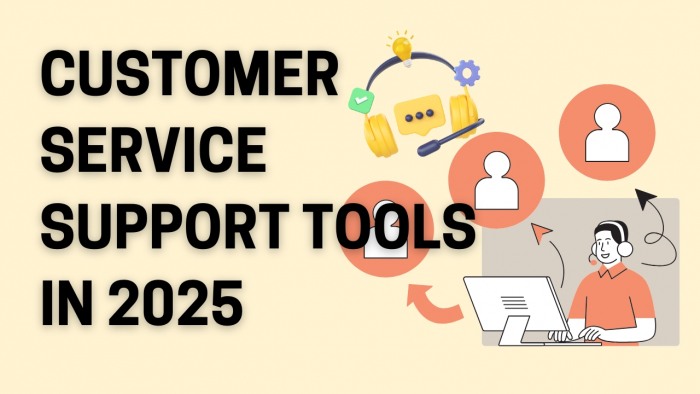Table of Content
- What is Team Collaboration?
- Importance of Team Collaboration Tools in Organizations
- How Team Collaboration Tools Help Internal Communication
- Finding the Right Team Collaboration Tool for Internal Communication
- Top 7 Team Collaboration Tools for Internal Communication
- Perks of Effective Team Collaboration Tools for Internal Communication
- Final Word on Team Collaboration Tools
Internal communication has always been the backbone of successful organizations. But in today’s digital-first workplace, emails and long meetings no longer cut it. Teams need faster, more transparent, and organized ways to collaborate. That’s where team collaboration tools step in.
In this blog, I’ll explain what team collaboration really means, why these tools matter for organizations, how they improve communication, what features to look for, and finally, the top seven tools that stand out in 2025.
What is Team Collaboration?
Team collaboration is the process of people working together toward shared goals while communicating openly and effectively. It’s not just about talking; it’s about coordinating tasks, sharing resources, and ensuring everyone stays on the same page.
In a digital workspace, collaboration happens through platforms that allow messaging, file sharing, video calls, and project tracking. This helps bridge gaps between departments, remote teams, and even global offices.
Importance of Team Collaboration Tools in Organizations
Why do organizations invest in these tools? Because miscommunication costs money. According to a study by Grammarly and The Harris Poll, poor workplace communication costs U.S. businesses $1.2 trillion annually.
Collaboration tools:
- Reduce email overload.
- Improve transparency.
- Speed up decision-making.
- Enhance employee engagement.
When teams collaborate better, productivity rises, and projects move forward with fewer delays.
How Team Collaboration Tools Help Internal Communication
Internal communication is more than company newsletters; it’s the real-time exchange of ideas, updates, and feedback. Collaboration tools make this flow seamless.
They help by:
- Centralizing communication: No scattered messages across apps.
- Enabling real-time updates: Teams get instant notifications.
- Supporting remote work: Video conferencing and document sharing keep distributed teams aligned.
- Tracking accountability: Assigned tasks and timelines make ownership clear.
Simply put, collaboration tools turn communication into action.

Finding the Right Team Collaboration Tool for Internal Communication
Not every tool fits every team. Choosing the right one depends on features that support your organization’s size, workflow, and goals.
Key features to look for include:
- Instant Messaging – quick, secure conversations.
- Video Conferencing – face-to-face interactions without travel.
- File Sharing & Storage – easy access to documents.
- Task & Project Management – keeping track of responsibilities.
- Integrations – seamless connection with tools like Google Workspace, Slack, or Trello.
- Mobile Access – ensuring work doesn’t stop when you’re away from your desk.
- Security & Compliance – protecting sensitive company data.
Top 7 Team Collaboration Tools for Internal Communication
Here are seven tools that organizations widely use in 2025:
1. Slack
Slack is known for its channel-based messaging system. Teams can organize conversations by projects or topics. It integrates with over 2,400 apps, making it a flexible hub for communication.
2. Microsoft Teams
Part of Microsoft 365, Teams combines chat, video calls, file sharing, and collaborative editing in one place. In 2024, it crossed 320 million monthly active users.
3. Zoom Team Chat
While Zoom is famous for video calls, its Team Chat feature has evolved into a full collaboration suite. It allows persistent chat, file sharing, and integration with workflows.
4. Google Chat & Spaces
Built into Google Workspace, Chat and Spaces enable teams to collaborate directly on Docs, Sheets, and Slides. Perfect for businesses already using Google tools.
5. Asana
Asana focuses on project and task management. Its communication features, like task comments and project conversations, reduce scattered emails.
6. Trello
Trello uses boards, lists, and cards to manage projects visually. Teams can comment, share files, and tag members directly within tasks.
7. Monday.com
Known for customizable workflows, Monday.com combines communication with automation. It supports task discussions, dashboards, and integrations across multiple tools.
Perks of Effective Team Collaboration Tools for Internal Communication
The right collaboration tool doesn’t just make communication easier; it changes the way teams work.
Benefits include:
- Faster decisions – no waiting for email replies.
- Fewer silos – everyone has access to the same information.
- Better engagement – employees feel connected.
- Improved productivity – teams spend less time searching for updates.
- Scalability – tools grow as your company grows.
A Gartner report shows that by 2026, 80% of businesses will adopt collaboration platforms as their primary communication method. This shift highlights just how central these tools are becoming.
Final Word on Team Collaboration Tools
Team collaboration isn’t just a buzzword; it’s a necessity. With the right tools, organizations can streamline internal communication, boost productivity, and keep employees aligned.
Whether your team is small and agile or a global enterprise, there’s a tool that fits. Start with your core needs, compare features, and choose one that integrates smoothly with your existing workflows.
Strong collaboration builds stronger teams, and that builds stronger businesses.
Post Comment
Be the first to post comment!


